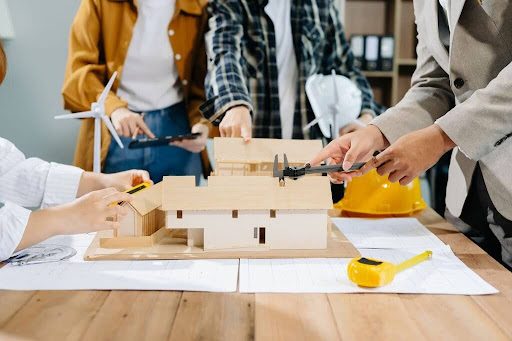Key Takeaways:
- Planning based on real-life routines helps avoid layout regrets after moving in
- Zoning and room placement play a key role in noise control, privacy, and daily flow
- Storage, access points, and circulation affect functionality more than cosmetic features
- Flexible spaces future-proof the home and add long-term value without extra cost
This is not the story of building a dream house to impress people. It is the story of building for things such as early mornings, late dinners, surprise visitors, and the upheaval in between. A new home plan is not just about having a checklist of features; it is about creating a space that accommodates the flow of your everyday life, mentions BHB Real Estate Group solutions. It does not matter whether you are moving out of a small rental or starting fresh on a block that you have been holding for years; the goal is the same: to build a functional home, not just aesthetically pleasing.
Thinking about your life is necessary before building of a construction, not thinking about your hoped life. That difference, according to most people, is far greater than they expect.
Understand How You Live Before You Plan Anything
Great visuals are something architects excel at, however, if they don’t truly get how you live in your house, those visuals might not work out when you actually try them. Your daily habits should be the starting point of any good plan. Are you the kind of person who always brings the groceries in through the garage? Do you require a quiet office solely for client calls? Do the children need a mudroom filled with schoolbags and wet shoes? These questions are not about style but about how well a space accommodates your routines.
There is a lot of allure in allowing Pinterest boards and display homes to dictate your thinking. But what is effective for someone else’s lifestyle may just be uncomfortable or completely impractical for yours. Consider the noise levels, the transition between rooms, and how various members of your family utilise the common areas.
Even the simple fact of where you prefer to have your morning coffee can determine whether a window, bench, or deck will be used or just be there without anyone noticing. Smart design is all about being in tune with the life you already live and then letting that guide every one of your decisions.
The Role of Zoning and Room Placement
When your necessities are clear, zoning can assist in grouping the rooms in such ways that they enhance your lifestyle. It is like functional clustering—continuing to keep the bedrooms in a quieter part of the house, putting the laundry near the bedrooms for convenience, or hiding a powder room so that guests aren’t walking past everything to find it.
In case you are working odd hours or have kids with early bedtimes, zoning thoughtfully can result in calm areas where rest is not interrupted by activity in other parts of the house. In a family home, the separation of noisy and quiet zones is not a luxury—it is what keeps everyone sane.
Moreover, the location of the rooms has a great impact on the energy efficiency and the use of light. By placing the living areas on the north side (in Australia) can the natural light be maximized and the heating costs in winter be lowered. Kitchens that are easily connected to outdoor spaces make weekend entertaining a breeze. Even something like placing a study near the front door can make a home office feel different without the need for a full-blown commercial setup.
The best zoning plans don’t just tick boxes. They quietly make the whole house easier to live in, without you needing to think about it every day.
When Lifestyle Drives Layout Choices
Floor plans can be flawless from a technical point of view and still not feel right after you move in. That mismatch most of the time occurs when a layout doesn’t represent the way a household works. Open-plan living is a great idea for some families, especially those who like to cook while talking or watching small kids. For others, it mixes the different spheres of life, such as work, rest, and play, in a way that is too much for them.
One can easily think that there is a “right” way to arrange a home, but the fact is it is only your usage that determines the correct layout. Perhaps a reading corner is more important to you than a butler’s pantry. If your evenings are quiet, then a soundproof media room may be a waste of space. Besides, if an extra living area is too far from the kitchen, it may never be used.
That’s why it makes sense to design your home that suits your family, not the family your builder assumes you have. Honest planning makes space for real habits—messy hobbies, home businesses, even pets that need room to roam. It also stops you from overinvesting in rooms that sit unused or feel disconnected from daily life.
The most successful builds come from decisions rooted in how a household functions, not how it looks in a floorplan brochure.
Storage, Access, and the Details That Change Everything
Still, you might feel cluttered all the time in the house that is beautiful but not your own but most new builds fall short because small but essential details get overlooked in favour of headline features. Storage is a typical example. If you haven’t thought about it thoroughly, you find yourself with boxes full of old stuff stacked in wardrobes, schoolbags that are by the front door, and kitchen benches that have multiple functions such as charging stations, homework zones, and mail collectors.
The built-in storage shouldn’t be only a proposition for the next plan. Consider where mess gathers the most in your present house and make the plan accordingly. A linen closet close to the bathroom, shelves near the entry, or some extra drawers under bench seats might be the game-changers. It is not about squeezing more cupboards into your home but rather putting storage in the places where you will really use it.
The circulation is still important. Narrow hallways and awkward door swings can give you the feeling that your daily movement is cramped even when you have a large house. Entry points are the places where you can walk in, drop your keys, take off your shoes, and go on with your life without bottlenecks. The laundry should not be a long and tiresome walk, and kitchen zones should be that you can easily move through even when it is the busiest time.
These aren’t luxury features—they’re what keep a house feeling functional long after the novelty of a new build has worn off.
Design Flexibility for Future-Proofing
The layout of a house that seems ideal now might not be suitable for you after five years. The family stays different. Children grow up, jobs change, and even your concept of a quiet night in may will be completely different a few years later. A good design should not restrict you to a certain lifestyle but rather it should be able to stretch with you.
Flexibility can be allowed in the design of a house through the use of multipurpose rooms. A nursery with built-in wardrobes can later be transformed into a study. A rumpus room may change into a guest room or a teenager’s retreat. The point is not to have additional square metres but rather to focus on how the space can change its function without a major renovation.
Even if it is just an unused corner next to the kitchen, it can be considered as a future work-from-home place. Similarly, a large hallway can at a later stage be turned into a library wall or study bench. Being thoughtful about the future does not necessarily make the building more difficult, but it can be a way of saving the layout change costs when life moves on.
If resale is on your mind, a flexible design also appeals to future buyers. A house that adapts to different needs holds its value better than one that feels tied to a narrow lifestyle.
Conclusion: Building with Real Life in Mind
New builds are full of potential, but potential only gets you so far. The reality of daily life will quickly test every decision made during planning. That’s why it helps to focus less on finishes and more on flow. Not just how rooms look—but how they work together, how they support your habits, and how they ease the friction of busy routines.
A well-designed home doesn’t need to be flashy. It needs to feel right when you walk through it on a chaotic Monday morning or a lazy Sunday afternoon. That feeling doesn’t come from luck. It comes from thoughtful planning, practical priorities, and a willingness to build for the life you actually live—not just the one you imagine.







